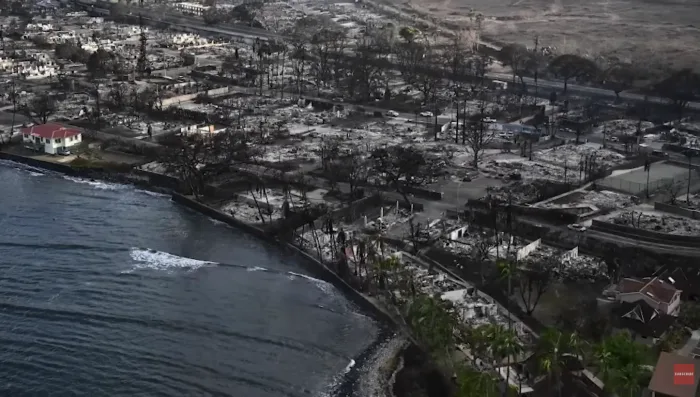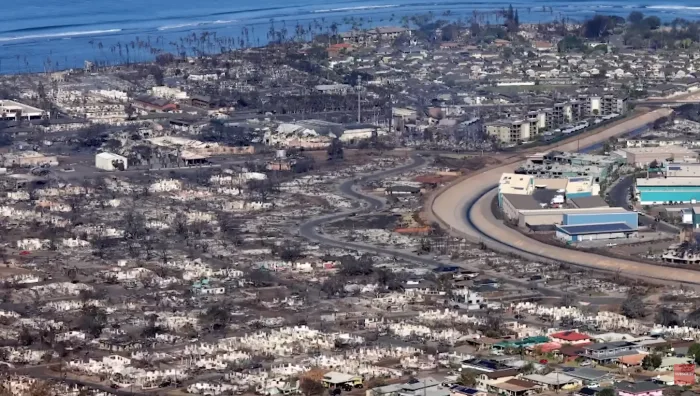The owner of a remarkable red-roofed house on Maui has shared several important but subtle aspects that she feels contributed to the house’s amazing survival throughout the wildfires, which has gone viral. Meanwhile, the neighborhood has burned to the ground.
Last week, stunning aerial photos of the undeveloped land went viral, sparking some bizarre conspiracy theories that claimed the destruction in the area was caused by a focused space laser strike.
The homeowner, Dora Atwater Millikin, credits the house’s survival to a number of standard modifications made during a recent renovation—none of which were designed to guard against such a disastrous occurrence.

According to landscape painter Millikin, “the house is 100% wood, so it’s not like we fireproofed it or anything,” which was disclosed to the Los Angeles Times.
Millikin and her retired portfolio manager husband Dudley were unaware of the impending wildfires while the renovations were underway. Their passion for historic architecture overshadowed their concern for disaster readiness as they worked to restore the century-old former bookkeeper’s home that they had been living in for three years.
Millikin said, “We just wanted to honor the building because we love old buildings.” “And we didn’t modify the building in any way — we simply restored it.”

Making the unanticipated choice to replace the conventional asphalt roof with a heavy-gauge metal one may have helped the house survive. This modification proved to be revolutionary even though fire resistance wasn’t the driving force behind it.
During the fire, Millikin was informed that “pieces of wood — some as long as 6 to 12 inches — were aflame and seemingly floating through the air due to the wind.” These flaming missiles may ignite roofs when they struck, but the metal roof served as a strong defense against such attacks.
Their choice of landscaping was another fortunate break. Although the couple’s goal was to repel termites, they unintentionally followed professional advice on how to keep homes safe from wildfires. Stones were placed up to the drip line of the roof surrounding the home, and any combustible vegetation close to the outside walls was cleared out.

The University of California Cooperative Extension’s Susie Kocher, a forestry advisor, praised their work. She pointed out that avoiding ember ignition, which can set off a chain reaction of devastation, requires keeping flammable shrubs and bushes far from a house.
The house’s survival was further aided by its advantageous location. Situated against the main sources of fire fuel on three sides—the ocean, a road, and an empty lot—the property was protected.
Sprinklers were present in the residence, however they were ineffective during the crisis due to power shortages. However, combustibles were removed from the section beneath the deck that faced the sea.

Kocher claims that embers, not walls of flame, are frequently the cause of house fires. Many people still don’t fully get this, though, and as a result, false conspiracy theories and rumors are spread.
Millikin’s and her husband’s intentions go beyond their own recuperation as they get ready to return to Maui. They’re dedicated to helping their neighbors who lost everything in the fires, highlighting the value of a strong sense of community in the face of hardship.
“We lost neighbors in this, and neighbors lost everything,” Millikin emphasized. “In times like these, we need to care for each other and rebuild. It’s a collective effort to rebuild what’s been lost.”





